There are islands in the Bass Strait region that have a million burrows of shearwaters on an island.
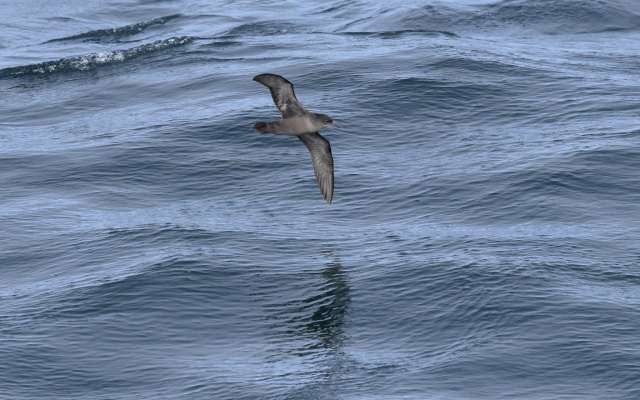
They breed around Tasmania. They are a fast-flying bird. During the breeding season here and south-east Australia these birds will fly down to the Antarctic in two days, to feed.
They'll feed down in Antarctic waters and then turn around and come back, feed their chick and then turn around and do it again. At the end of the season, the adults head down to the Antarctic to feed up and then they all head north as far as Alaska.
So you'll have this migration from south-east Australia through into the north Pacific around Japan, Kamchatka Peninsula (in Russia) and the Aleutian Islands from Alaska. They'll spend three months up in the North Pacific before they turn around and fly back.
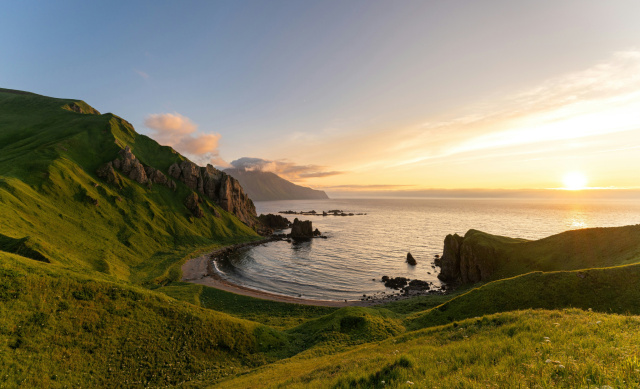
It takes them about 15 to 18 days to fly back from Alaska to southeast Australia. So not quite as rapidly as the godwits, but they can stay and if need be feed en route rather than flying through in one long flight.
In the breeding season, they're heading south back and forward, their trips get longer as the chick gets older and then, at the end of the breeding season they head up to Alaska to spend the Northern Hemisphere summer preparing for their next breeding season in Australia.
These are birds that have been described as chasing the perpetual summer. They're here in the Southern Hemisphere only during the summer months and then they migrate rapidly to the Northern Hemisphere to enjoy the northern summer conditions.
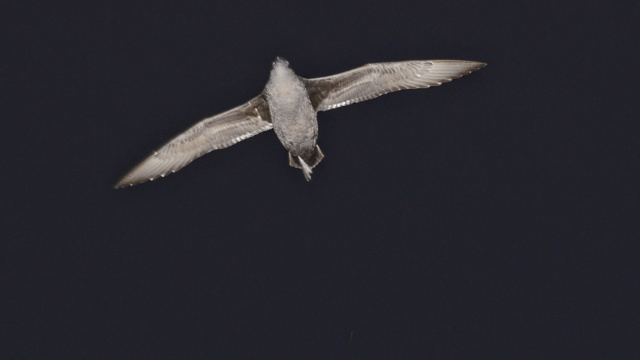
In many cases around Tasmania, little penguins and short-tailed shearwaters will share a coastal colony. Occasionally, there will actually be competition for a particular burrow.
So if there's a penguin in a burrow and a shearwater comes in, well - sorry too late, there's already somebody there. There's a bit of a battle as to who is the stronger, but possession is nine-tenths of the law. So first in gets to keep it.
Here on Bruny Island at The Neck there's a very large colony of shearwaters and penguins. We've estimated something in the order of 10,000-plus burrows for shearwaters.
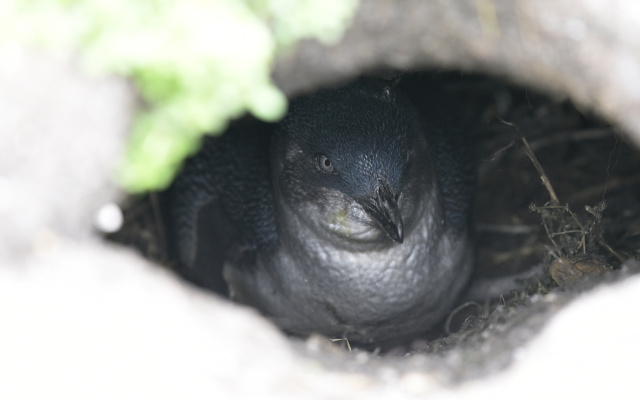
The time comes when the adults disappear and then the chicks are left in the burrows. The last meal the chicks get, they weigh about a kilo. So double the weight of an adult, but then that is the last meal they get - and that meal has to translate into muscle mass and growing their feathers ahead of their first flight - to Alaska.
At some point in time, the chicks realise mum and dad aren't coming home to give me a feed anymore, so they head outside, flap around on a few windy nights, get a sense of how to use their wings and then they just head off and that's it. And they then either make it or they don't.
We know from banding studies, there's about a 90% mortality in the first year or so.
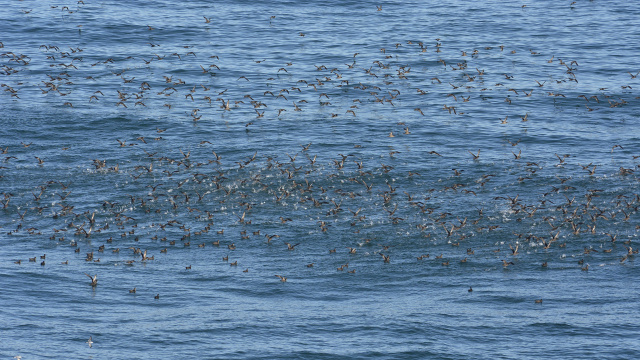
But if the chicks survive that first year, they get to know their way around the Pacific Ocean, how to use their wings and how to find food.
We have short-tailed shearwaters in some of the study colonies that are 45 years old. The basic information, the basic science tells us remarkable things about what these birds are doing.
The short-tailed shearwaters weigh 500 grams and can live for 45 years.
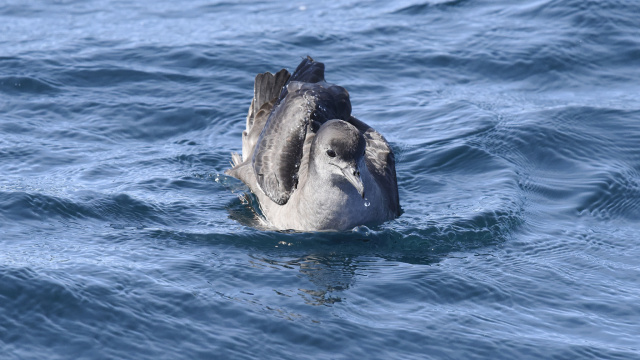
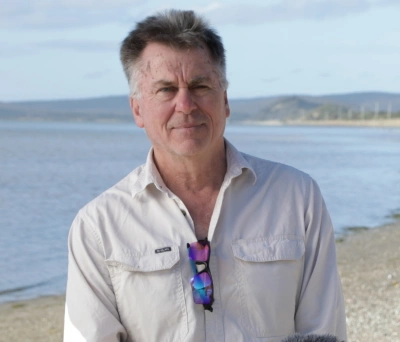
Dr Eric Woehler
There are islands in the Bass Strait region that have a million burrows of shearwaters on an island.

They breed around Tasmania. They are a fast-flying bird. During the breeding season here and south-east Australia these birds will fly down to the Antarctic in two days, to feed.
They'll feed down in Antarctic waters and then turn around and come back, feed their chick and then turn around and do it again. At the end of the season, the adults head down to the Antarctic to feed up and then they all head north as far as Alaska.
So you'll have this migration from south-east Australia through into the north Pacific around Japan, Kamchatka Peninsula (in Russia) and the Aleutian Islands from Alaska. They'll spend three months up in the North Pacific before they turn around and fly back.

It takes them about 15 to 18 days to fly back from Alaska to southeast Australia. So not quite as rapidly as the godwits, but they can stay and if need be feed en route rather than flying through in one long flight.
In the breeding season, they're heading south back and forward, their trips get longer as the chick gets older and then, at the end of the breeding season they head up to Alaska to spend the Northern Hemisphere summer preparing for their next breeding season in Australia.
These are birds that have been described as chasing the perpetual summer. They're here in the Southern Hemisphere only during the summer months and then they migrate rapidly to the Northern Hemisphere to enjoy the northern summer conditions.

In many cases around Tasmania, little penguins and short-tailed shearwaters will share a coastal colony. Occasionally, there will actually be competition for a particular burrow.
So if there's a penguin in a burrow and a shearwater comes in, well - sorry too late, there's already somebody there. There's a bit of a battle as to who is the stronger, but possession is nine-tenths of the law. So first in gets to keep it.
Here on Bruny Island at The Neck there's a very large colony of shearwaters and penguins. We've estimated something in the order of 10,000-plus burrows for shearwaters.

The time comes when the adults disappear and then the chicks are left in the burrows. The last meal the chicks get, they weigh about a kilo. So double the weight of an adult, but then that is the last meal they get - and that meal has to translate into muscle mass and growing their feathers ahead of their first flight - to Alaska.
At some point in time, the chicks realise mum and dad aren't coming home to give me a feed anymore, so they head outside, flap around on a few windy nights, get a sense of how to use their wings and then they just head off and that's it. And they then either make it or they don't.
We know from banding studies, there's about a 90% mortality in the first year or so.

But if the chicks survive that first year, they get to know their way around the Pacific Ocean, how to use their wings and how to find food.
We have short-tailed shearwaters in some of the study colonies that are 45 years old. The basic information, the basic science tells us remarkable things about what these birds are doing.
The short-tailed shearwaters weigh 500 grams and can live for 45 years.

You might like...

Protecting Bruny's beach-dwellers

Little penguin paradise

The amazing migration

Watch: behind the scenes at the Bruny Island Bird Festival
Newsletter
Sign up to keep in touch with articles, updates, events or news from Kuno, your platform for nature
